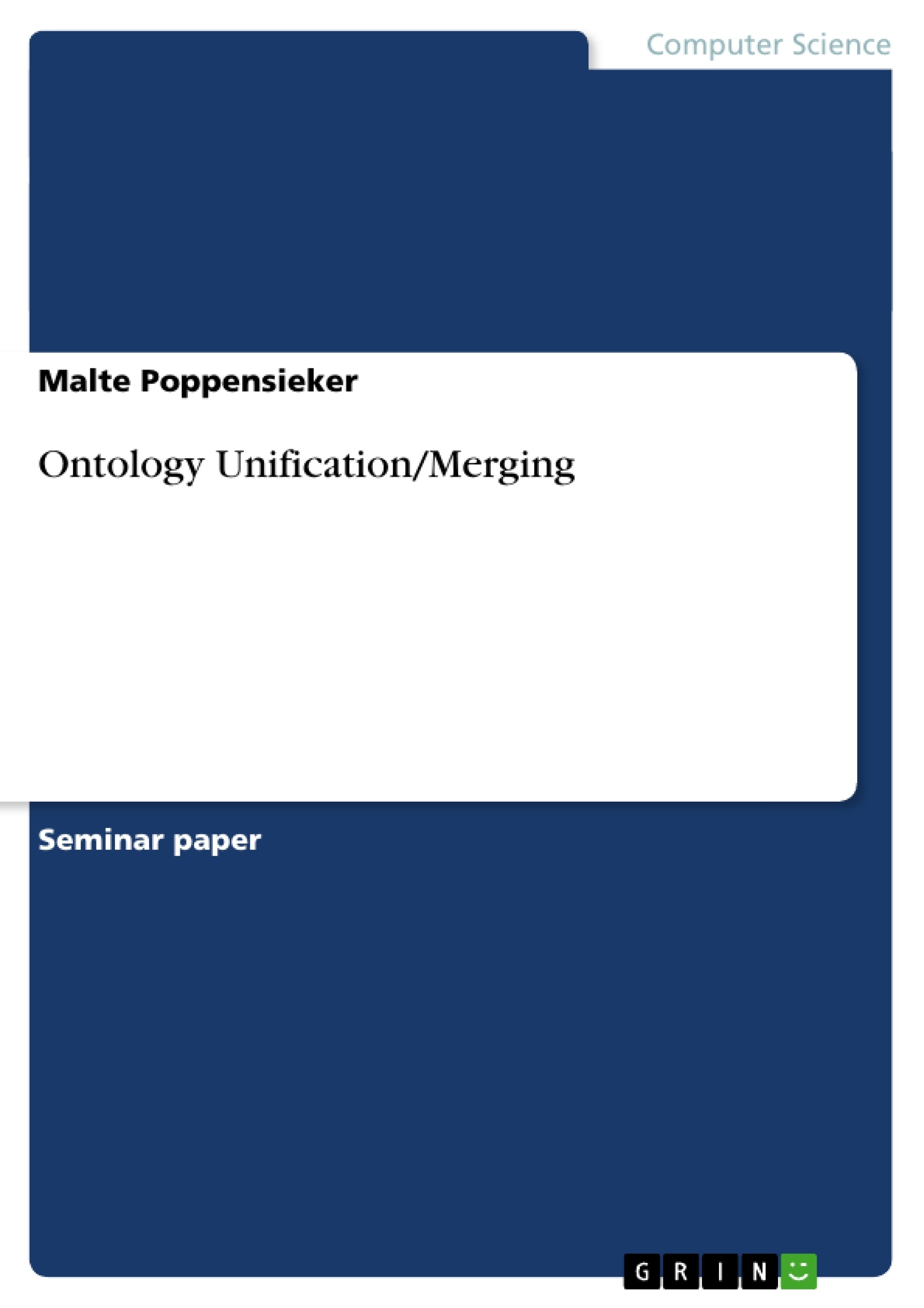The idea of the Semantic Web is to allow internet content to be machine understandable and usable. Also, new knowledge should be inferable from already existing content. To achieve this, a machine must be proficient of merging information from different sources. This is no easy task as the Semantic Web will be just as heterogeneous as the web is today. OWL is a recommendation for a common language that will be used to encode knowledge on the Semantic Web in the form of ontologies. This paper will introduce OWL in general and describe some features that can be used to support merging of OWL files. Later, the process of merging OWL files and its three sub-processes mapping, aligning and combining will be described in detail. Also, some potential problems, which arise in merging, will be discussed. Later follows a quick evaluation of MoA and Prompt, two already available OWL merging tools.
Inhaltsverzeichnis (Table of Contents)
- Introduction
- Concept of the Semantic Web
- Basic Layers - Unicode, URI, XML, RDF
- Ontologies
- Logic, Proof, Trust
- Terminology
- OWL
- Basic Elements
- Import and Mapping Mechanisms
- OWL
- Merging OWL Ontologies
- Mapping
- Aligning
- Combining
- Merging Tools: Two Examples
- Testing Environment
- MoA
- Prompt
- Comparison
Zielsetzung und Themenschwerpunkte (Objectives and Key Themes)
This paper aims to introduce the concept of the Semantic Web, its underlying technologies, and the challenges of merging ontologies. It focuses on the importance of ontology merging for realizing the full potential of the Semantic Web.
- The Semantic Web and its goal of machine-understandable and usable internet content.
- The development and features of the Web Ontology Language (OWL) as a standard for encoding knowledge.
- The process of merging OWL files, including mapping, aligning, and combining techniques.
- Challenges and potential problems associated with merging OWL ontologies.
- A brief overview of existing OWL merging tools, MoA and Prompt, and their respective strengths and limitations.
Zusammenfassung der Kapitel (Chapter Summaries)
- Introduction: The paper introduces the growth of the internet and the increasing need for machine-understandable and usable content. It introduces the concept of the Semantic Web as a solution to this problem, focusing on the importance of ontology merging for achieving this goal.
- Concept of the Semantic Web: This chapter outlines the layered model of the Semantic Web, discussing its basic technologies like Unicode, URI, XML, and RDF. It introduces the concept of ontologies as a crucial element for representing knowledge on the Semantic Web.
- Terminology: This chapter introduces the Web Ontology Language (OWL) as a recommended standard for encoding knowledge on the Semantic Web. It describes basic OWL elements such as namespaces, classes, individuals, and properties. It also discusses the import and mapping mechanisms of OWL.
- Merging OWL Ontologies: This chapter dives into the process of merging OWL ontologies, detailing its three sub-processes: mapping, aligning, and combining. It explores potential mismatches and mapping techniques, as well as strategies for aligning and combining different ontologies.
- Merging Tools: Two Examples: This chapter provides a brief overview of two existing OWL merging tools, MoA and Prompt. It presents their algorithms, test results, and comparisons, offering insights into their capabilities and limitations.
Schlüsselwörter (Keywords)
Semantic Web, Ontology, OWL, Ontology Merging, Ontology Unification, Mapping, Aligning, Combining, MoA, Prompt, Knowledge Representation.
- Arbeit zitieren
- Malte Poppensieker (Autor:in), 2004, Ontology Unification/Merging, München, GRIN Verlag, https://www.hausarbeiten.de/document/29389


